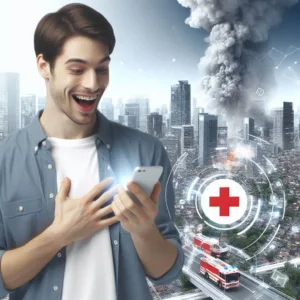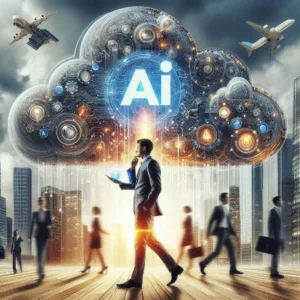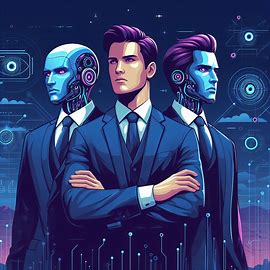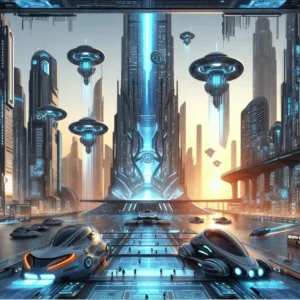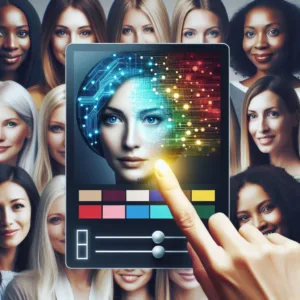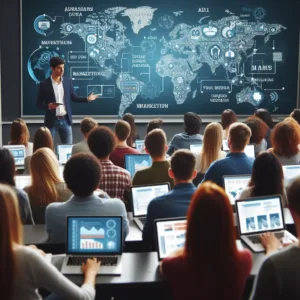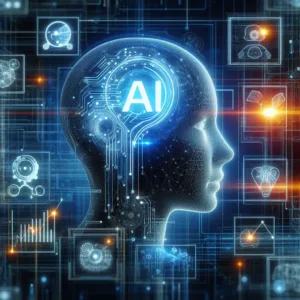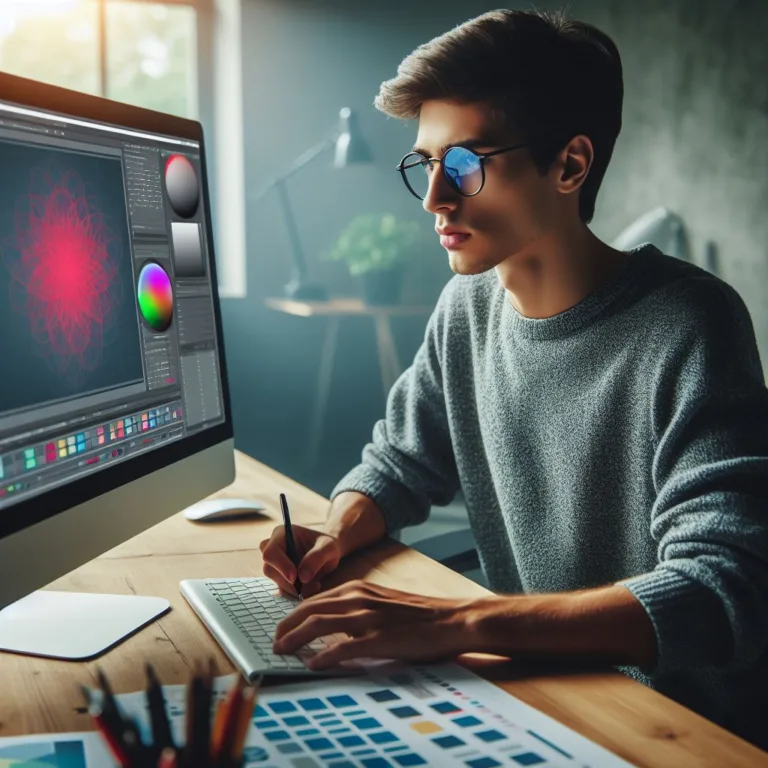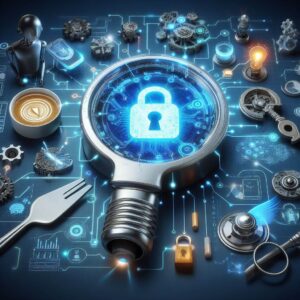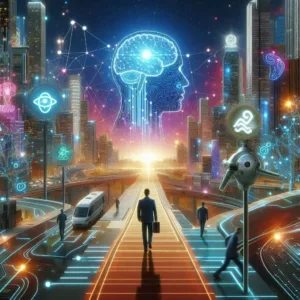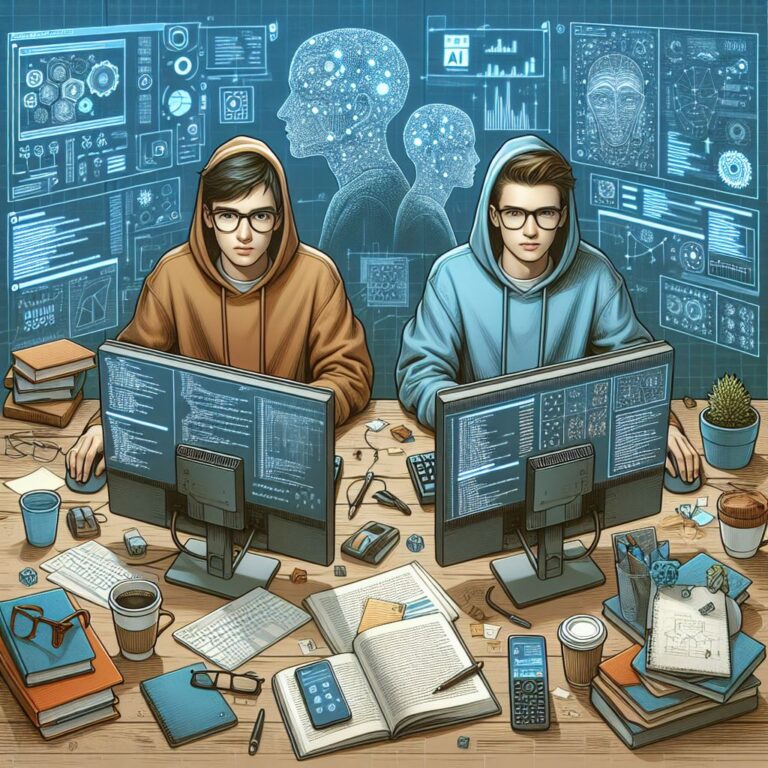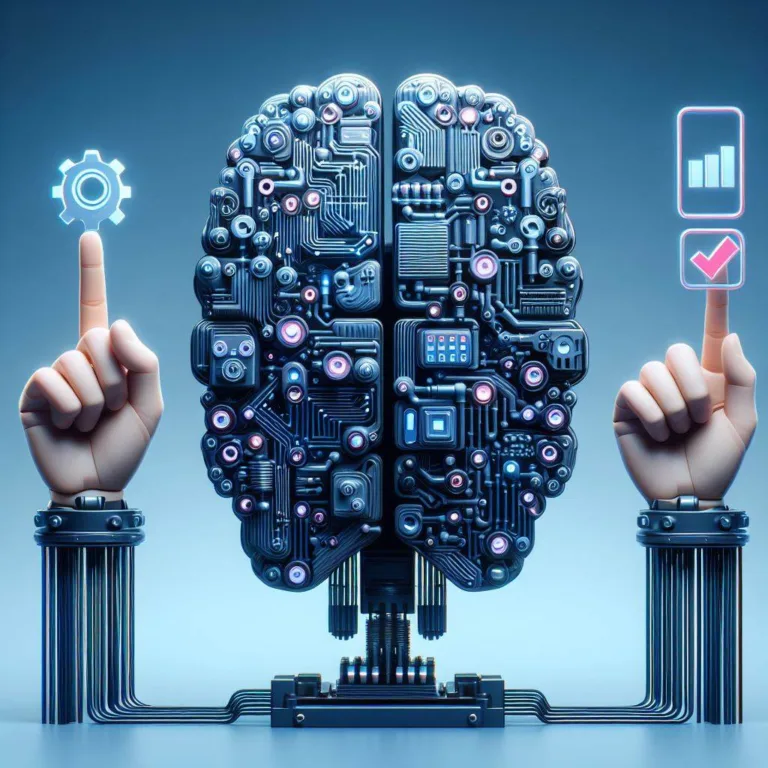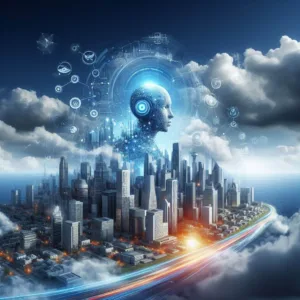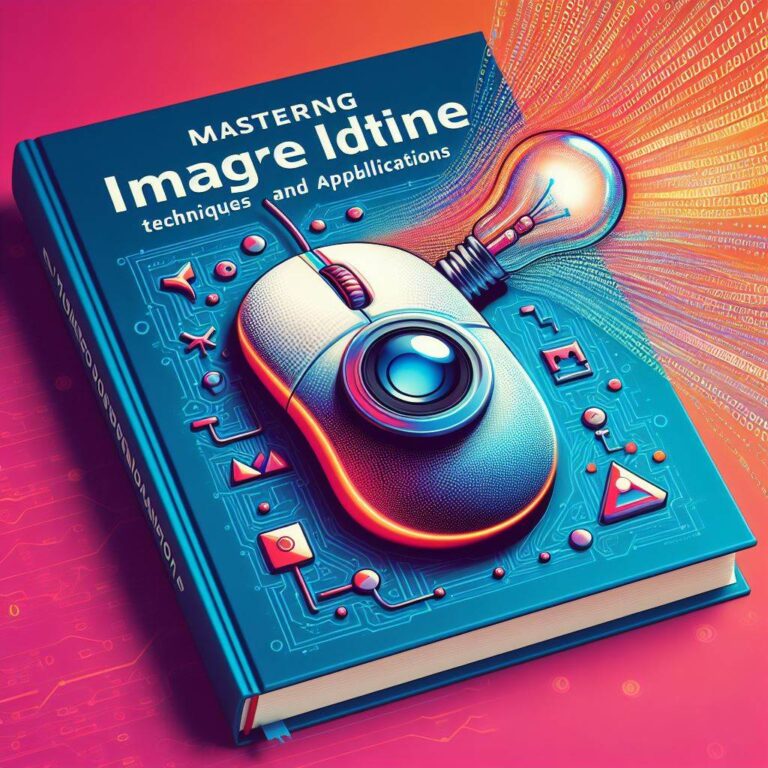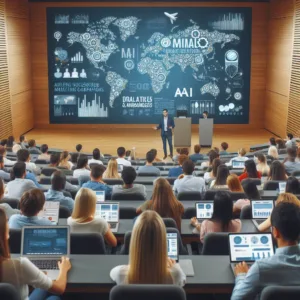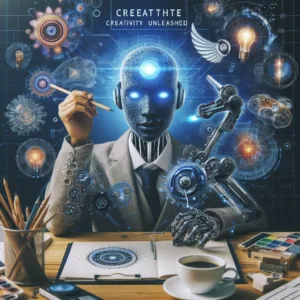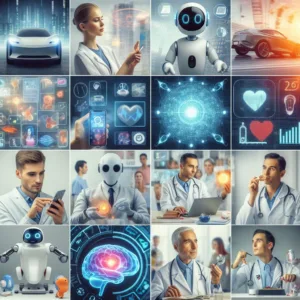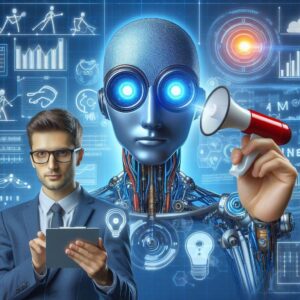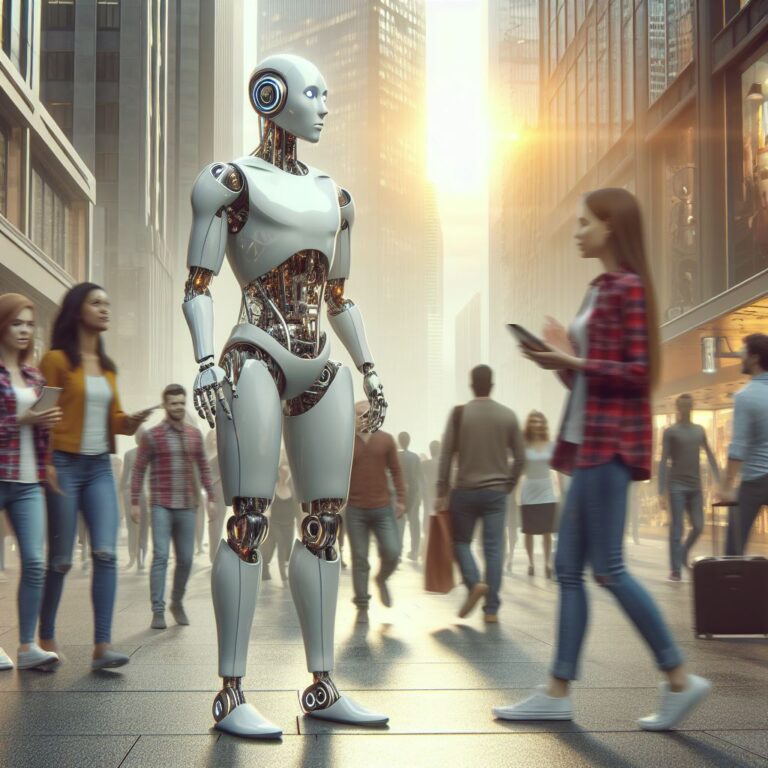AI-Generated Craftsmanship: Exploring the Intersection of Creativity and Technology
In recent years, the realm of artistic expression has witnessed a profound transformation with the advent of AI-generated artwork. This article “AI-Generated Craftsmanship ” delves into the multifaceted landscape of AI-generated artwork, exploring its history, creative processes, diverse forms, impact on the artistic community, ethical considerations, future directions, and more.
Artificial Intelligence (AI) has transcended its traditional roles in automation and optimization to venture into the realm of creativity. AI-generated artwork, once a niche field, is now garnering widespread attention for its innovative approach to artistic expression.
Definition and Emerging Interest
AI-generated artwork encompasses works of art created with the assistance of artificial intelligence technologies. These technologies employ algorithms, machine learning models, and vast datasets to generate visual, auditory, or intellectual content independently or in collaboration with human artists.
In recent years, there has been a surge of interest in AI-generated artwork due to its novelty, complexity, and potential to redefine artistic boundaries. Artists, technologists, and enthusiasts alike are increasingly drawn to exploring the capabilities and implications of AI in the creative process.
AI offers an endless canvas for creative exploration, enabling unconventional approaches to composition, design, and interpretation. From generating surreal landscapes to composing music, AI demonstrates a remarkable ability to emulate, augment, and even transcend human creativity.
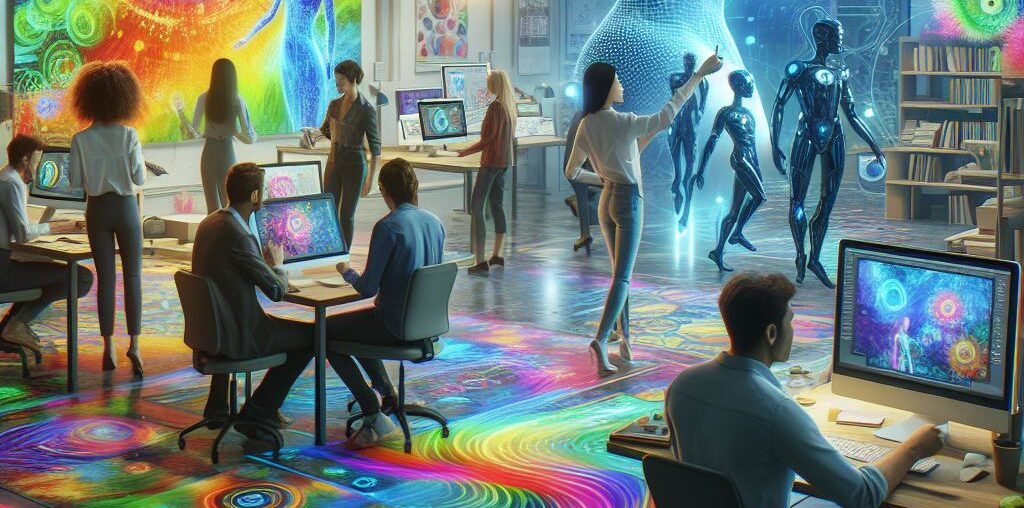
Historical Context AI-Generated Craftsmanship
The origins of AI-generated artwork can be traced back to the early experiments of pioneering researchers and artists. In the 1960s and 1970s, computer programs like AARON, developed by Harold Cohen, produced algorithmic drawings that showcased rudimentary forms of machine-generated creativity.
Over subsequent decades, advancements in AI, particularly in the areas of neural networks and deep learning, revolutionized the possibilities of computational creativity. Artists began leveraging sophisticated AI algorithms to create increasingly complex and aesthetically compelling artworks.
From the iconic “DeepDream” images generated by Google’s neural networks to the algorithmic compositions of AI-generated music, there is a growing corpus of significant AI-generated artworks. These examples underscore the diverse and evolving nature of AI’s contributions to the art world.
Understanding AI’s Creative Process AI-Generated Craftsmanship
AI algorithms employ various techniques, such as generative adversarial networks (GANs), recurrent neural networks (RNNs), and convolutional neural networks (CNNs), to generate artwork. These algorithms analyze patterns, learn from existing artworks, and produce new content based on learned associations and probabilities.
Datasets play a crucial role in training AI models for artistic tasks. Large repositories of images, music samples, or literary texts provide the raw material from which AI algorithms learn to generate content. Machine learning algorithms iteratively refine their understanding of artistic styles, themes, and traditions through exposure to diverse datasets.
While human creativity is rooted in cognition, emotion, and experience, AI creativity stems from statistical reasoning and pattern recognition. Human artists infuse their creations with subjective meaning, intentionality, and cultural context, whereas AI-generated artwork often reflects statistical regularities and learned associations devoid of human-like consciousness.

Varieties in AI Artwork Forms AI-Generated
AI algorithms are proficient in generating a wide range of visual artworks, including paintings, drawings, and digital designs. From photorealistic portraits to abstract compositions, AI-generated visual artwork spans various styles, genres, and aesthetic sensibilities.
AI’s ability to analyze and synthesize sound data has led to the creation of AI-generated music and sound compositions. AI algorithms can compose melodies, harmonies, and rhythms that evoke diverse musical genres, from classical orchestras to experimental electronica.
AI algorithms trained on vast corpora of literary texts can generate coherent and thematically rich prose and poetry. While AI-generated writing may lack the depth and subtlety of human-authored works, it often exhibits a surreal, dreamlike quality that intrigues readers and critics alike.
Impact on the Creative Community
The emergence of AI-generated artwork has sparked debates surrounding authenticity, authorship, and creative agency. Critics question whether AI-generated artworks can be considered genuine expressions of creativity or mere simulations of human imagination. The notion of authorship becomes blurred in collaborative endeavors between human artists and AI systems.
Many artists embrace AI as a creative tool, collaborating with AI systems to explore new artistic frontiers. AI enhances artists’ abilities, offering novel insights, generating unexpected ideas, and facilitating experimentation with unconventional techniques. Collaborative projects between artists and AI systems blur the boundaries between human and machine creativity, yielding hybrid artworks that challenge traditional concepts of creation and creativity.
AI’s ability to generate vast quantities of content rapidly opens up new avenues for artistic expression and exploration. Artists can harness AI algorithms to overcome creative blocks, explore alternative artistic styles, and push the boundaries of their craft. AI-generated artwork prompts reflection on the nature of creativity, inspiration, and aesthetic innovation in the digital age.
Ethical Considerations and Challenges
The ownership and distribution of AI-generated artwork raise complex copyright issues and legal challenges. Questions arise regarding the rights of AI algorithms, the attribution of authorship, and the commercial exploitation of AI-generated artworks. Legal frameworks struggle to keep pace with the rapid evolution of AI-generated artwork, leading to uncertainties and ambiguities in intellectual property law.
AI algorithms trained on biased or limited datasets may perpetuate stereotypes, reinforce cultural biases, or exclude marginalized perspectives. Ensuring diversity and inclusivity in AI-generated artworks requires careful curation of training data, algorithmic transparency, and ethical oversight. Artists and technologists must confront and mitigate biases in AI systems to foster equitable and representative creative practices.
The democratization of AI tools for art creation also carries risks of misuse and manipulation. Malicious actors may use AI algorithms to generate counterfeit artworks, propagate disinformation, or manipulate public opinion. Safeguarding the integrity and authenticity of AI-generated artwork requires robust measures for authentication, verification, and ethical conduct in the art market and digital media landscape.
Future Directions and Possibilities
Continued advancements in AI technology, particularly in areas such as generative modeling, natural language processing, and multimodal learning, promise to further enhance the landscape of AI-generated artwork. New techniques and algorithms will enable artists to create increasingly sophisticated and compelling artworks, blurring the boundaries between human and machine creativity.
The integration of AI tools and techniques into art education and creative processes presents opportunities to expand the horizons of artistic practice. Educators can incorporate AI-generated artwork projects into curricula, fostering interest, collaboration, computational thinking, and critical reflection on the ethical and aesthetic dimensions of AI in art.
As AI continues to advance, its role in the art world is likely to evolve as well. Speculations abound regarding the emergence of AI-generated artwork movements, the proliferation of AI-powered art exhibitions, and the transformation of aesthetic practices in response to AI advances. The future of AI in the art world holds both promise and uncertainty, shaping the forms of creativity and culture in the digital age.
In conclusion, the intersection of AI and creativity within the arts heralds a new era of artistic discovery, innovation, and discourse. As we navigate the complexities and opportunities of AI-generated artwork, let us remain vigilant to its ethical implications, mindful of its transformative potential, and open to the myriad possibilities of human-machine collaboration in the pursuit of beauty, meaning, and truth.
Further Exploration
For more articles on AI trends and tools, readers can explore AI Up Trend, AI Tech Trends, and AI Tools. These platforms offer valuable insights into the latest developments in artificial intelligence and its applications across various industries, including the arts.
As AI-generated artwork continues to evolve and captivate audiences worldwide, it invites artists, technologists, and enthusiasts to engage in ongoing exploration and innovation. By embracing AI as a tool for creative experimentation and collaboration, we can unlock new possibilities for artistic expression, cultural exchange, and collective imagination.
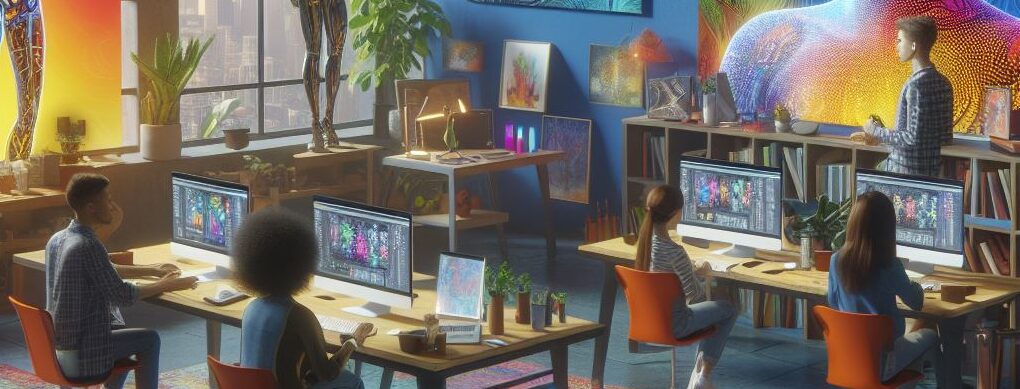
Final Thoughts AI-Generated Craftsmanship
The fusion of AI and creativity in the arts represents not just a convergence of technologies, but a convergence of human ingenuity and machine intelligence. As we embark on this journey of exploration and discovery, let us embrace the opportunities afforded by AI-generated artwork while remaining mindful of the ethical considerations and societal implications. Together, we can shape a future where AI and human creativity coexist harmoniously, enriching our lives and inspiring generations to come.
AI Resources and Insights
AI Art Generator on Canva: Explore how to create art with AI on Canva.
NVIDIA Startups: Discover opportunities for startups with NVIDIA.
Konverge AI: Learn how Konverge AI can transform your business.
Heygen Pricing: Check out Heygen’s pricing for AI solutions.
DataCentric AI: Explore the latest AI trends on DataCentric AI.
Google Cloud Conversational AI: Discover Google Cloud’s conversational AI solutions.
Amazon Web Services (AWS): Explore Amazon Web Services’ AI services.
Marketing AI Institute: Learn more about AI-powered marketing at the Marketing AI Institute.
Harvard Business Review – AI Marketing Strategy: Read about designing an AI marketing strategy on Harvard Business Review.
SAS – AI Marketing Future: Discover what the future holds for AI marketing on SAS.
Sprout Social AI Marketing Tools: Explore AI marketing tools from Sprout Social.
Pixlr Image Generator: Create unique images with Pixlr’s image generator.
Creative Writing Prompts on AI UpTrend: Explore creative writing prompts powered by AI on AI UpTrend.
AI Trends on AI UpTrend: Discover the latest AI trends on AI UpTrend.
AI Insights on AI UpTrend: Explore the latest advancements in AI on AI UpTrend.
AI Tools on AI UpTrend: Discover a variety of AI tools on AI UpTrend.
AI Tutorials on AI UpTrend: Explore AI tutorials to deepen your knowledge on AI UpTrend.

